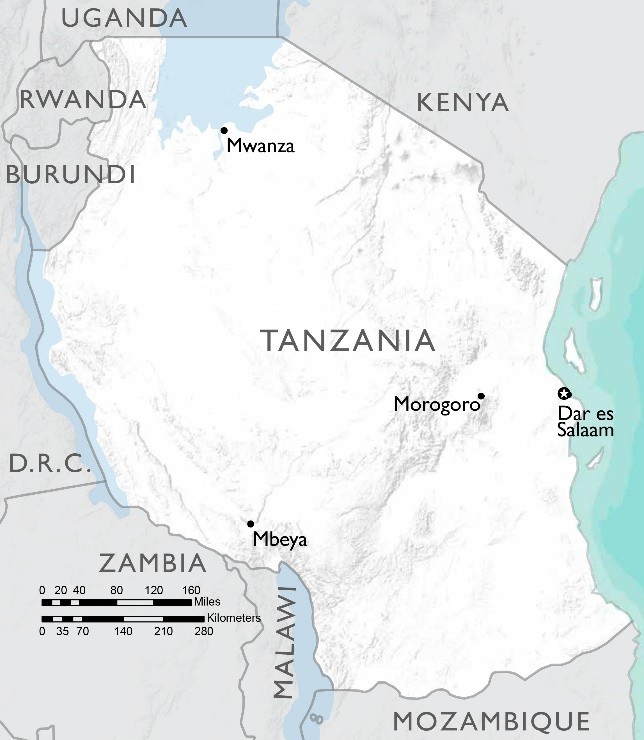Home » What We Do » Agriculture and Food Security » Food Assistance » Country Fact Sheets » Food Assistance Fact Sheet - Tanzania
- What We Do
- Agriculture and Food Security
- Democracy, Human Rights and Governance
- Economic Growth and Trade
- Education
- Ending Extreme Poverty
- Environment and Global Climate Change
- Gender Equality and Women's Empowerment
- Global Health
- Water and Sanitation
- Working in Crises and Conflict
- U.S. Global Development Lab

September 15, 2017
Situation
- Refugees and other vulnerable communities in Tanzania face persistent food insecurity despite rapid economic growth and domestic agricultural production that meets national food requirements, according to the UN World Food Program (WFP).
- High levels of poverty and an agricultural sector susceptible to shocks contribute to food insecurity in Tanzania. The USAID-funded Famine Early Warning Systems Network (FEWS NET) reports that food security conditions across Tanzania improved in August as farmers completed their harvests, which resulted in near-normal cereal yields for 2017. In localized northern and central regions, however, production was significantly below average, and some poor households will face low food stocks and Stressed (IPC 2)* food insecurity until the end of 2017.
- Political instability and violence in neighboring Burundi and the Democratic Republic of the Congo (DRC) have driven thousands of refugees into Tanzania. The Office of the UN High Commissioner for Refugees (UNHCR) estimates that more than 243,000 Burundians have taken refuge in Tanzania since April 2015, bringing the total number of refugees and asylum-seekers in Tanzania to 361,000 as of August 2017.
- Refugees’ livelihood opportunities are limited in Tanzania, and WFP assistance is their main source of food. FEWS NET reports that most refugees are currently facing Stressed (IPC 2!) levels of food insecurity with ongoing humanitarian assistance. Without humanitarian assistance, refugees would face Crisis (IPC 3) levels of acute food insecurity. Funding shortfalls forced WFP to reduce maize meal rations for refugees sheltering in Tanzania in July 2017, and during the August food distribution, rations were cut again and provided only 62 percent of daily calorie needs.
*The Integrated Phase Classification (IPC) is a standardized tool that aims to classify the severity and magnitude of food insecurity. The IPC scale, which is comparable across countries, ranges from Minimal (IPC 1) to Famine (IPC 5).
Response
- With support from USAID’s Office of Food for Peace (FFP), WFP provides emergency food assistance to more than 300,000 refugees, primarily from Burundi and DRC, in Tanzania. FFP enables WFP to provide U.S. in-kind food assistance and locally and regionally procured food to highly vulnerable people through general food distributions and targeted supplementary feeding programs for children younger than five years of age, pregnant and lactating women, and hospitalized patients. These activities improve access to food and prevent and treat acute malnutrition.
- To date in Fiscal Year 2017, FFP has supported WFP’s response to the refugee crisis in Tanzania with approximately $17.4 million and nearly 17,700 metric tons of food.
Food for Peace Contributions
Total Contributions:
| U.S. Dollars | Metric Tons | |
|---|---|---|
| Fiscal Year 2017 | $17.4 million | 17,699 MT |
| Fiscal Year 2016 | $14.2 million | 9,400 MT |
| Fiscal Year 2015 | $3.1 million | 310 MT |
Food Security Situation information is provided by FEWS NET as of September 2017.







Comment
Make a general inquiry or suggest an improvement.